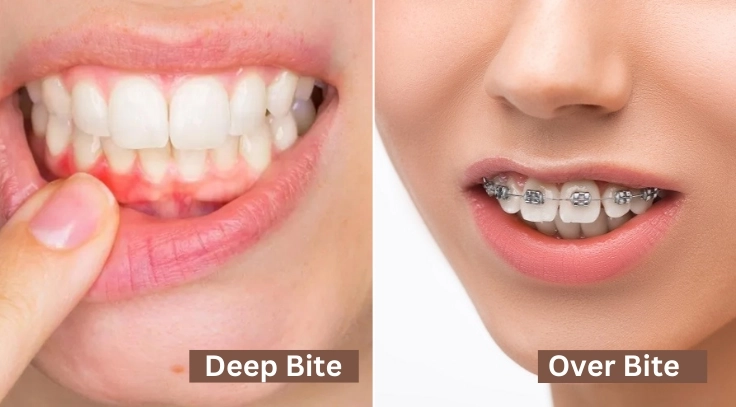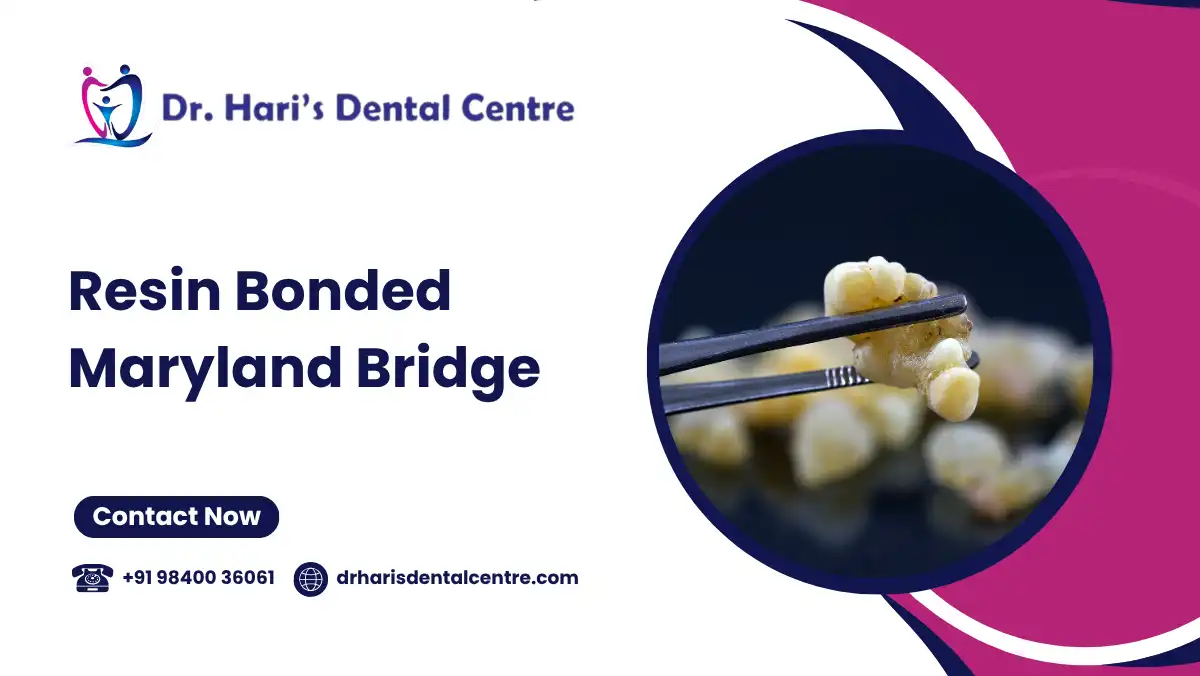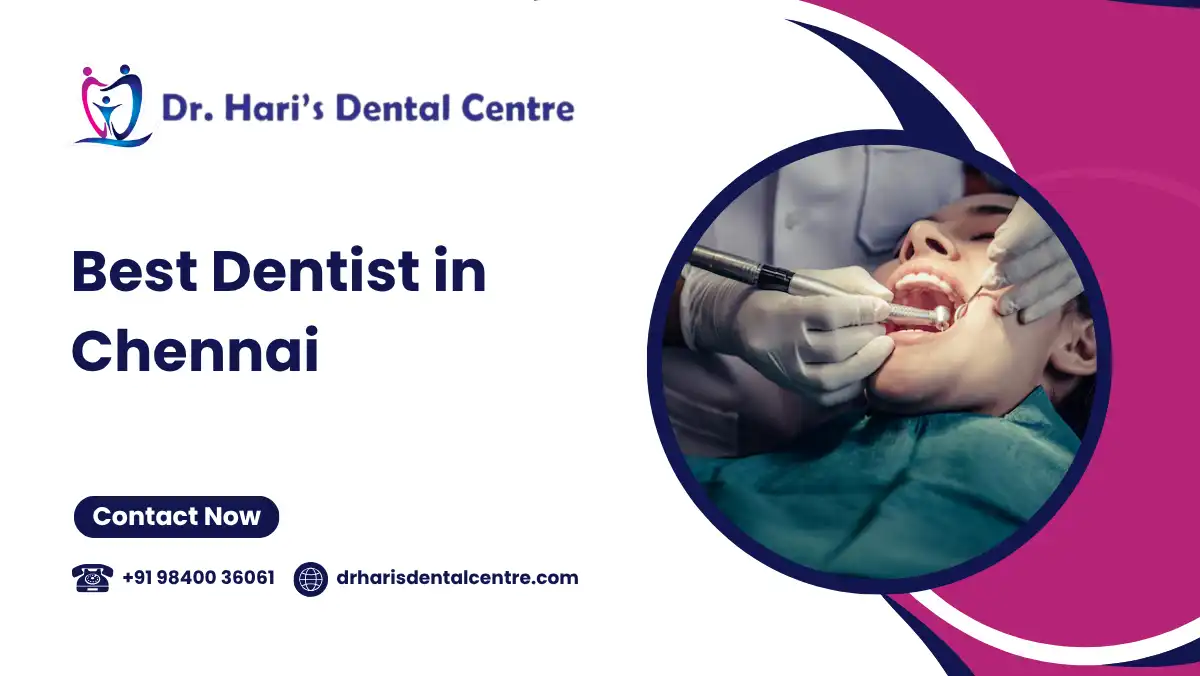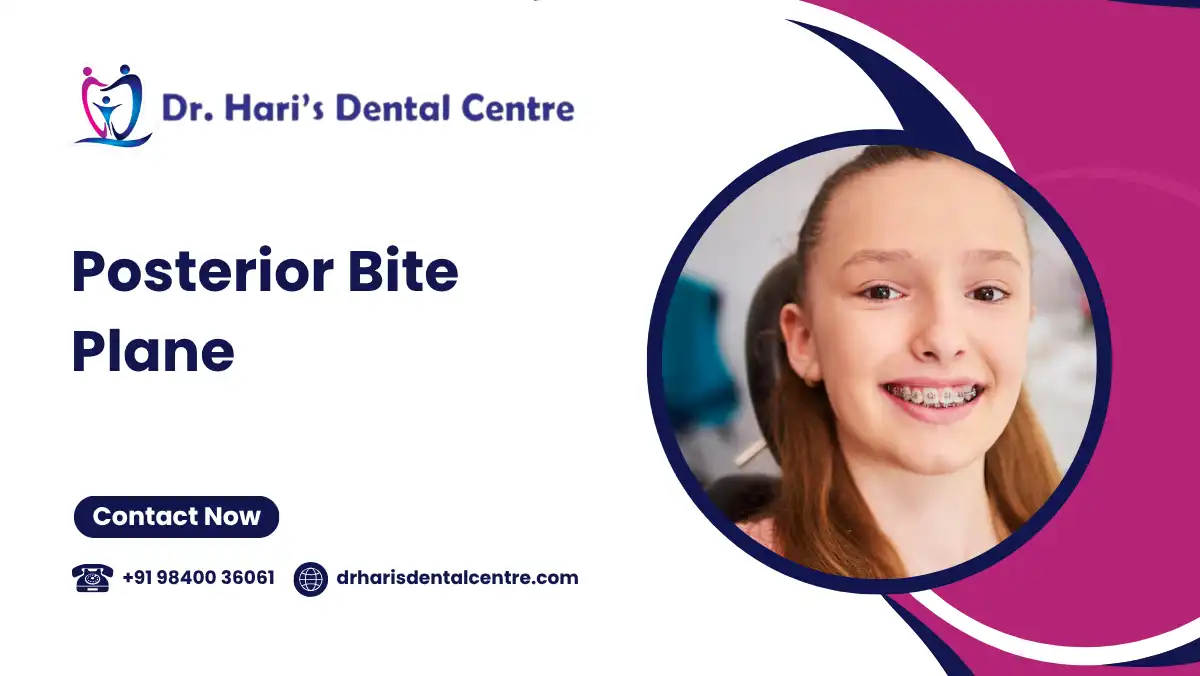Orthodontics is a specialized branch of dentistry that focuses on diagnosing, preventing, and treating misalignments of the teeth and jaws. This practice is essential for both children and adults as it helps correct problems such as overcrowded teeth, crooked teeth, and misaligned bites. Orthodontic treatment not only enhances the appearance of the smile but also improves overall dental health by promoting proper function. With modern advancements in orthodontics, there are now various treatments available, from traditional braces to clear aligners, providing comfortable, effective, and tailored solutions for every patient’s needs.

Deep Bite / Over Bite Correction

A deep bite, or overbite, occurs when the upper teeth excessively overlap the lower teeth, which can lead to tooth wear, jaw pain, and difficulty chewing. Correcting this misalignment is crucial to improving both the function of the bite and the aesthetics of the smile. Braces or clear aligners are typically used to gradually reposition the teeth and ensure a balanced bite.
- Orthodontics & Aligners: These are used to gradually shift the teeth into proper alignment to reduce the excessive overlap and improve bite function. Braces are ideal for precise control in complex cases, while clear aligners offer a discreet and comfortable option for mild to moderate corrections.
- Jaw Adjustments or Surgery: In more severe cases, surgical intervention may be required to correct the alignment of the upper or lower jaw and improve the bite. Surgical planning involves detailed imaging and coordination with orthodontic care for optimal outcomes.
- Customized Treatment Plans: Each treatment plan is tailored to the severity of the deep bite, ensuring optimal results while considering the patient’s individual needs. Factors such as age, jaw growth, facial structure, and dental health are evaluated to determine the most effective approach.
Under Bite / Proclined Teeth / Prognathism
An underbite, also known as prognathism, is a condition where the lower teeth extend beyond the upper teeth. It is often caused by disproportionate growth of the lower jaw, and it can impact both appearance and oral function. Lip and cheek Bumpers Individuals with this condition may experience challenges with chewing, speech articulation, and jaw strain. Early diagnosis and timely intervention significantly improve outcomes, especially in growing children.
- Functional Appliances: Used mainly in children, these appliances guide the growth of the jaw to correct bite discrepancies as they develop. By addressing the skeletal imbalance early, these tools can reduce or eliminate the need for future surgical correction.
- Braces or Clear Aligners: These orthodontic devices are used to gradually reposition the teeth and realign the bite. Braces are effective in controlling and correcting complex dental shifts, while clear aligners offer a removable and visually discreet alternative for mild to moderate cases.
- Jaw Surgery: In severe cases of prognathism where jawbones are significantly misaligned, surgical intervention may be required. Jaw surgery repositions the mandible to create a balanced bite and harmonious facial structure. This is often coordinated with pre- and post-surgical orthodontic treatment.
Cross Bite
A crossbite occurs when one or more upper teeth bite on the inside of the lower teeth, causing imbalance in the dental arch. This misalignment can lead to uneven tooth wear, periodontics Treatment, and jaw discomfort if left untreated. Class 3 corrections Crossbites may affect the front teeth (anterior crossbite), the back teeth (posterior crossbite), or both. Early diagnosis is crucial, especially in children, to prevent long-term skeletal and dental complications.
- Braces or Clear Aligners: These appliances realign the teeth, ensuring the upper and lower arches come together in proper alignment. Braces offer controlled and gradual correction, while clear aligners are a more aesthetic and removable option, often preferred by teens and adults.
- Palatal Expanders: Used primarily in growing children, palatal expanders gently widen the upper jaw over time. This allows teeth to shift into the correct position and promotes proper bite alignment. Early intervention with expanders can help avoid more complex procedures in adulthood.
- Customized Plans: Treatment plans are tailored to the patient’s age, severity of the crossbite and jaw development. A comprehensive evaluation involving dental imaging and bite analysis guides the process for optimal results and long-term stability.
Class 2 Malocclusion Correction
Class 2 malocclusion, commonly referred to as an overbite, occurs when the upper teeth extend significantly over the lower teeth. This condition affects both children and adults and can lead to chewing inefficiency, speech disturbances, and increased wear on the front teeth. Class 3 corrections If left untreated, it may also cause jaw strain and contribute to temporomandibular joint (TMJ) discomfort. Early assessment and customized treatment are essential to correct the bite and ensure long-term dental stability.
- Braces and Clear Aligners: These devices gradually shift the teeth and realign the bite to correct the overbite and improve function. Chin cup Braces are particularly effective for complex tooth movements, Chin cup while clear aligners offer a less visible and more convenient option for appropriate cases.
- Headgear: In growing children, headgear is sometimes used as part of orthopedic treatment to control the forward growth of the upper jaw. This allows proper alignment with the lower jaw, potentially avoiding the need for surgical correction later in life.
- Jaw Surgery: In severe adult cases where skeletal discrepancies are present, surgical repositioning of the upper jaw may be required. This approach improves both bite function and facial aesthetics when orthodontic treatment alone is insufficient.
Anterior and Posterior Open Bite
An open bite is a malocclusion where the upper and lower teeth do not make contact when the mouth is closed, leaving a visible gap. This condition can involve the front teeth (anterior open bite) or back teeth (posterior open bite). Open bites can result from habits like thumb sucking, tongue thrusting, or skeletal growth discrepancies. If left untreated, they may affect speech clarity, chewing efficiency, and facial aesthetics.
- Braces and Clear Aligners: These devices move the teeth into proper alignment, closing the gap and improving functionality. Braces are often preferred for more complex tooth movements, while clear aligners offer a less noticeable and removable option suitable for certain cases.
- Bite Plates: These are custom-designed appliances that help correct open bites by encouraging proper vertical tooth contact. Bite plates are particularly effective for younger patients and those with habit-related open bites.
- Functional Appliances: In children and adolescents, functional appliances can guide jaw growth and help align the bite. These are essential when the open bite is due to skeletal imbalances and can reduce the need for future surgical intervention.
Open Bite Due to Tongue Thrusting
Tongue thrusting is a myofunctional habit where the tongue pushes against or between the teeth during swallowing, speaking, or even at rest. Class 3 corrections Over time, this repetitive pressure can interfere with normal dental alignment, often resulting in an anterior open bite. This condition affects both children and adults and can lead to Kids Orthodontics for Speech Issues, improper bite function, and difficulty closing the mouth properly.
- Braces and Bite Plates: These appliances help realign the teeth and close the open bite by repositioning the teeth into their correct position. Bite plates serve as a reminder for the tongue to stay in the correct position, while braces move the teeth into proper alignment.
- Speech Therapy: Essential for eliminating tongue thrusting habits and encouraging proper tongue posture. A trained speech therapist works with patients to retrain swallowing patterns, strengthen orofacial muscles, and reinforce correct speech techniques.
- Behavioral Modification: Encourages proper tongue placement to avoid recurrence of the open bite after orthodontic treatment. This includes patient education, Lip and cheek Bumpers consistent monitoring, and exercises designed to correct muscle memory and promote long-term habit change.
Conclusion
Orthodontics is an essential field of dentistry that addresses a wide range of dental issues, improving both appearance and functionality of the teeth and jaw. Through advanced appliances, such as braces, clear aligners, and other corrective devices, orthodontics offers customized solutions for children and adults alike. Whether for aesthetic purposes or to correct malocclusions, orthodontic treatment enhances dental health and improves overall well-being. At Dr. Hari’s Dental Centre, we provide comprehensive orthodontic care, ensuring that each patient receives personalized treatment that achieves optimal results and a healthy, confident smile.







